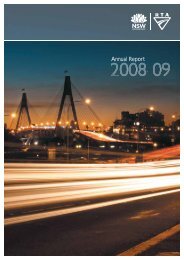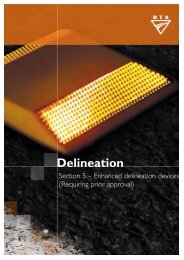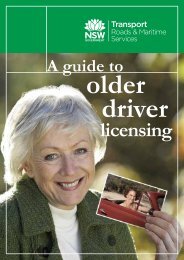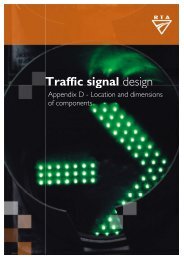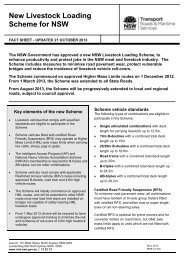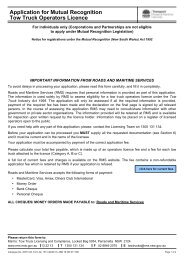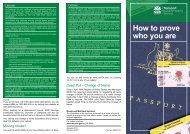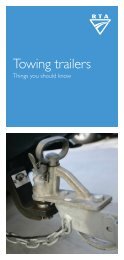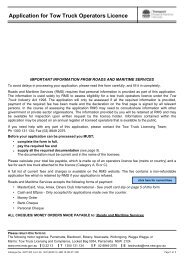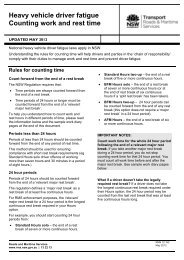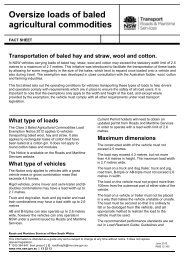Hazard perception handbook - RTA
Hazard perception handbook - RTA
Hazard perception handbook - RTA
You also want an ePaper? Increase the reach of your titles
YUMPU automatically turns print PDFs into web optimized ePapers that Google loves.
5<br />
48<br />
Safe gaps – making U-turns<br />
U-turns are more complicated than right turns as you need to look for traffic<br />
approaching from behind you and traffic coming towards you. U-turns fall just<br />
outside the five most common crash types for NSW provisional drivers. However,<br />
some advice on coping with them is included as they are obviously hazardous for<br />
new drivers.<br />
fEATURES Of U-TURNS<br />
U-turns are sharper than right turns. you have to cover more road to complete the<br />
U-turn. Because it is a very tight turn, usually from a stationary (stand still) position,<br />
you generally can’t accelerate quickly until you have completed the turn. Therefore<br />
you need to be sure the gap is long enough to let you get up to the speed of the<br />
stream of traffic you are entering. As with other turns, the faster the traffic, the<br />
more time and space you will need to complete a U-turn.<br />
A WORd Of CAUTION<br />
U-turns are difficult and potentially dangerous, particularly on busy, high speed<br />
roads. Unless you really have to make a U-turn, don’t. An alternative is to do a right<br />
turn into a side street, make a three-point turn where it is quieter and safer, then<br />
turn left back onto the road you left.<br />
kEy POINTS SUMMARy: SAfE GAPS – U-TURNS<br />
• U-turns can be difficult and dangerous.<br />
• If it is dangerous to do a U-turn, don’t – do a three-point turn in a side street<br />
instead.<br />
<strong>Hazard</strong> <strong>perception</strong> <strong>handbook</strong>



